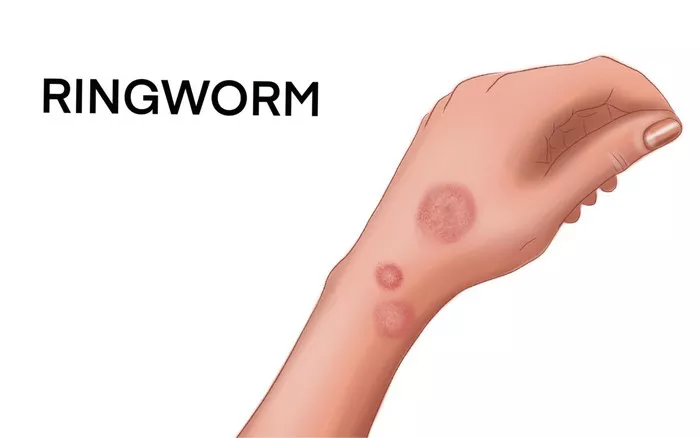Ringworm, also known as tinea capitis, is a fungal infection that affects the scalp. It can cause hair loss, scaling, and redness. Understanding how to treat ringworm effectively is important for a full recovery. This article provides detailed information on the best treatments for ringworm on the head, including prevention tips and aftercare.
What Is Ringworm?
Ringworm is not caused by a worm but by a fungus. It is a common skin infection that can appear on various body parts, including the scalp. The fungus thrives in warm, moist environments, making the scalp a suitable place for it to grow.
Symptoms of Ringworm on the Head
Recognizing the symptoms of ringworm is crucial for timely treatment. Common symptoms include:
Red, scaly patches: These patches may be round and itchy.
Hair loss: The affected areas may become bald as hair falls out.
Itching: The scalp may feel uncomfortable and itchy.
Dark spots: The skin may darken in the affected areas.
Swelling: In severe cases, the scalp may swell.
If you notice these symptoms, it is essential to consult a healthcare provider for a proper diagnosis.
Diagnosis of Ringworm
A healthcare professional can diagnose ringworm through a physical examination. They may also take a sample of the affected skin or hair for laboratory testing. This helps confirm the presence of the fungal infection.
Best Treatments for Ringworm on the Head
1. Antifungal Medications
The primary treatment for ringworm is antifungal medications. These can be topical (applied directly to the skin) or systemic (taken orally).
Topical Antifungals
For mild cases, topical antifungals can be effective. These include:
- Clotrimazole (Lotrimin)
- Miconazole (Monistat)
- Terbinafine (Lamisil)
Apply these medications to the affected areas as directed by a healthcare provider. Use them for at least two weeks, even if symptoms improve before the treatment course is complete.
Oral Antifungals
For more severe cases or when topical treatments fail, oral antifungals may be necessary. Common options include:
- Griseofulvin
- Terbinafine
- Itraconazole
These medications typically require a prescription and should be taken for several weeks. It is important to follow the prescribed dosage to ensure effectiveness.
2. Medicated Shampoos
Medicated shampoos can help treat ringworm on the scalp. These shampoos often contain antifungal agents like:
- Ketoconazole
- Selenium sulfide
Use these shampoos as directed. Typically, they should be applied to the scalp and left on for a few minutes before rinsing. Incorporating medicated shampoos into your routine can help reduce fungal growth.
3. Home Remedies
While not a substitute for medical treatment, some home remedies may help alleviate symptoms and support recovery. Always consult a healthcare professional before trying any home remedy.
Tea Tree Oil
Tea tree oil has antifungal properties. Dilute it with a carrier oil, such as coconut oil, and apply it to the affected areas. Use it once or twice daily for best results.
Apple Cider Vinegar
Apple cider vinegar may help reduce fungal growth. Mix equal parts apple cider vinegar and water, and apply it to the scalp. Rinse it off after 30 minutes.
Aloe Vera
Aloe vera has soothing and anti-inflammatory properties. Apply fresh aloe vera gel to the affected areas to relieve itching and promote healing.
4. Maintaining Scalp Hygiene
Good hygiene is crucial in managing ringworm. Follow these tips to maintain a clean scalp:
Wash your hair regularly: Use a gentle shampoo to keep your scalp clean.
Avoid sharing personal items: Do not share hairbrushes, towels, or hats to prevent spreading the infection.
Keep the scalp dry: Fungi thrive in moist environments. After washing, dry your hair thoroughly.
Prevention of Ringworm
Preventing ringworm is key to avoiding future infections. Here are some effective prevention strategies:
1. Maintain Good Hygiene
Regularly wash your hair and scalp to keep them clean. Bathe frequently, especially after exercising or sweating.
2. Avoid Direct Contact
Ringworm is contagious. Avoid close contact with individuals who have an active infection. If you have pets, ensure they are free of ringworm, as animals can also carry the fungus.
3. Wear Protective Gear
If you participate in activities where you may come into contact with infected surfaces (like gym mats), consider wearing a hat or head covering.
4. Disinfect Common Areas
Regularly clean and disinfect shared spaces, such as bathrooms and gyms. This helps reduce the risk of fungal spread.
Aftercare Tips
Once treatment begins, follow these aftercare tips to support healing:
1. Follow the Treatment Plan
Adhere to the prescribed treatment regimen. Complete the full course of medication, even if symptoms improve early.
2. Monitor Symptoms
Keep an eye on the affected areas. If symptoms worsen or do not improve after a few weeks, consult your healthcare provider for further evaluation.
3. Avoid Irritants
Refrain from using harsh hair products or dyes on the affected areas until fully healed. These can irritate the scalp and prolong recovery.
4. Practice Stress Management
Stress can weaken the immune system, making it harder for your body to fight off infections. Engage in relaxation techniques like yoga or meditation to help manage stress.
When to Seek Medical Attention
If you experience any of the following, seek medical attention promptly:
- Severe swelling or redness
- Pus or drainage from the affected area
- Fever or chills
- Symptoms that do not improve after two weeks of treatment
Conclusion
Ringworm on the head can be effectively treated with antifungal medications, medicated shampoos, and good hygiene practices. Early diagnosis and treatment are crucial for a full recovery. By following the recommended treatment plan and prevention strategies, you can manage and prevent future infections. If you suspect you have ringworm, consult a healthcare provider for proper diagnosis and guidance. Your scalp health is important, and taking action can lead to a swift recovery.
Related topics:

























